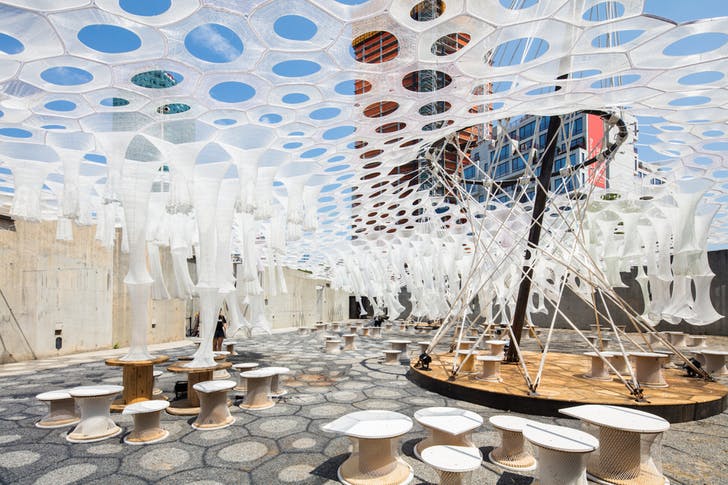/*
Judy Li
Section A
judyli@andrew.cmu.edu
Project-02
*/
var eyeSize = 30;
var ballSize = 8;
var ellfaceWidth = 100;
var ellfaceHeight = 150;
var recfaceWidth = 100;
var recfaceHeight = 150;
var noseSize = 5;
var mouthWidth = 10;
var mouthHeight = 5;
var hatWidth = 200;
var hatHeight = 15;
function setup() {
createCanvas(640, 480);
stroke(0);
strokeWeight(1.5);
r = random(255);
g = random(255);
b = random(255);
}
function mousePressed() {
// when the user clicks, these variables are reassigned
// to random values within specified ranges. For example,
// 'faceWidth' gets a random value between 75 and 150.
ellfaceWidth = random(125, 250);
ellfaceHeight = random(125, 250);
eyeSize = random(10, 30);
recfaceWidth = random(125, 250);
recfaceHeight = random(125, 250);
noseSize = random(1, 5);
mouthWidth = random(10, 50);
mouthHeight = random(1, 10);
recnoseWidth = random(10, 50);
recnoseHeight = random(10, 50);
hatWidth = random(250,300);
hatHeight = random(5,25);
fill(r,g,b,);
r = random(255);
g = random(255);
b = random(255);
}
function draw() {
scale(7/8);
background(218,175,32);
if (mouseX < (width / 2)) {
//Round Head
ellipse(width / 4, height / 2, ellfaceWidth, ellfaceHeight);
var eyeLX = width / 4 - ellfaceWidth * 0.25;
var eyeRX = width / 4 + ellfaceWidth * 0.25;
var ballLX = width/4 - ellfaceWidth * 0.25;
var ballRX = width/4 + ellfaceWidth * 0.25;
//Glasses
push();
strokeWeight(5);
stroke(255);
ellipse(eyeLX, height / 2, eyeSize/2, eyeSize/2);
ellipse(eyeRX, height / 2, eyeSize/2, eyeSize/2);
pop();
//Eyes
strokeWeight(5);
ellipse(ballLX, height / 2, ballSize/4, ballSize/4);
ellipse(ballRX, height / 2, ballSize/4, ballSize/4);
//Nose
push();
stroke(0);
strokeWeight(5);
ellipse(width / 4, (height / 2)+20, noseSize, noseSize);
//Mouth
strokeWeight(10);
ellipse(width / 4, (height / 2)+50, mouthWidth, mouthHeight);
pop();
}
if (mouseX >(width / 2)) {
//Rectangular Head
rect(3*(width / 5), (height / 3), recfaceWidth, recfaceHeight);
var eyeLX = (3*(width / 5)) + 1.75*(recfaceWidth * 0.2);
var eyeRX = (3*(width / 5)) + 3.25*(recfaceWidth * 0.2);
var ballLX = (3*(width / 5)) + 1.75*(recfaceWidth * 0.2);
var ballRX = (3*(width / 5)) + 3.25*(recfaceWidth * 0.2);
//Glasses
push();
strokeWeight(5);
stroke(255);
ellipse(eyeLX, (height / 3)+50, eyeSize, eyeSize);
ellipse(eyeRX, (height / 3)+50, eyeSize, eyeSize);
pop();
//Eyes
strokeWeight(5);
ellipse(ballLX, (height / 3)+50, ballSize/2, ballSize/2);
ellipse(ballRX, (height / 3)+50, ballSize/2, ballSize/2);
//Nose
push();
stroke(255);
strokeWeight(5);
ellipse(3*(width / 5) + (recfaceWidth/2), (height / 2), noseSize, noseSize);
//Mouth
strokeWeight(10);
ellipse(3*(width / 5) + (recfaceWidth/2), (height / 2)+30, mouthWidth, mouthHeight);
pop();
}
}
This project was a challenging one at first. I think I had some trouble with some overlaps in terms of what was supposed to show up first, second, and etc. But, I enjoyed writing up the codes for this project because it was fun and I was satisfied with my end results.
![[OLD FALL 2018] 15-104 • Introduction to Computing for Creative Practice](../../../../wp-content/uploads/2020/08/stop-banner.png)

